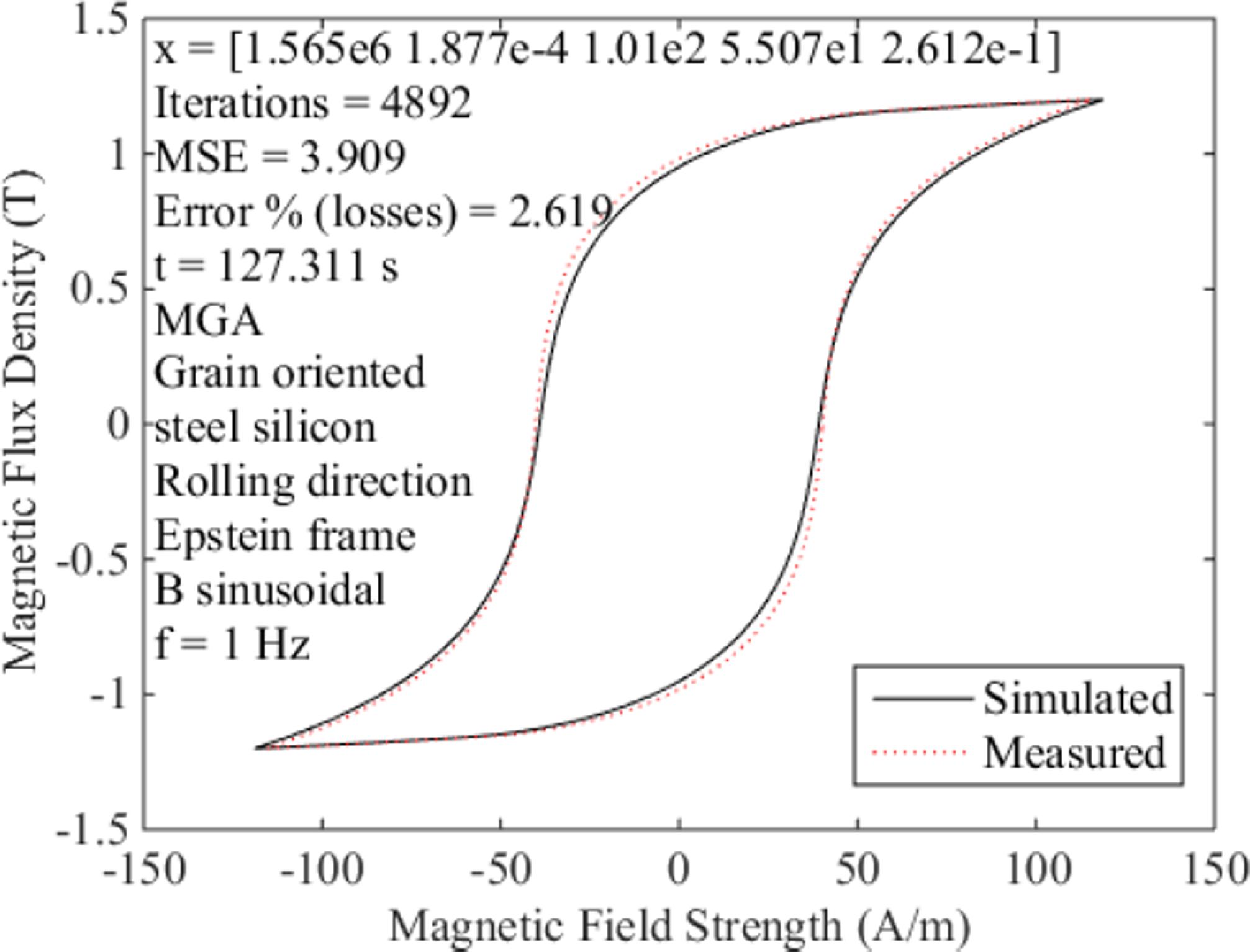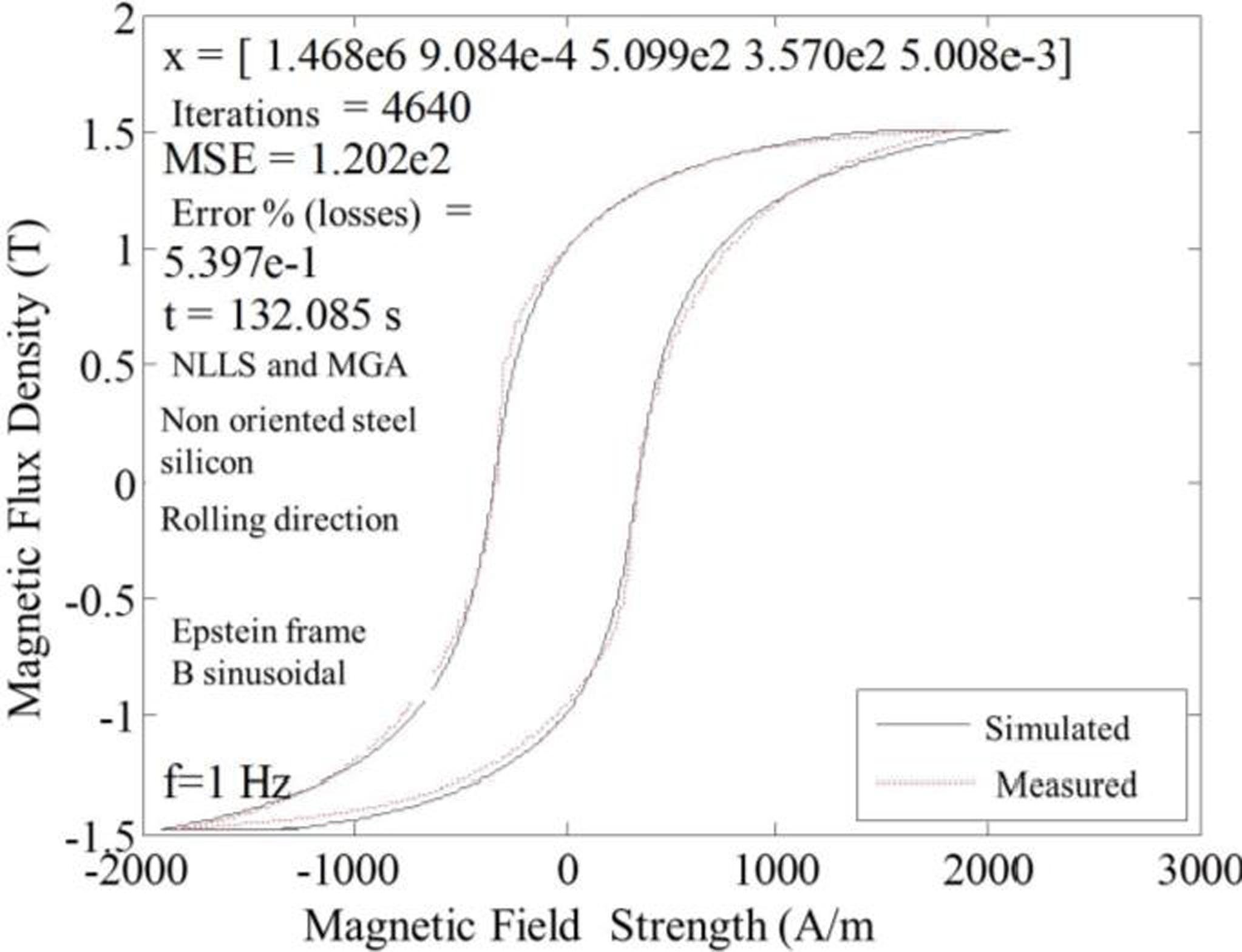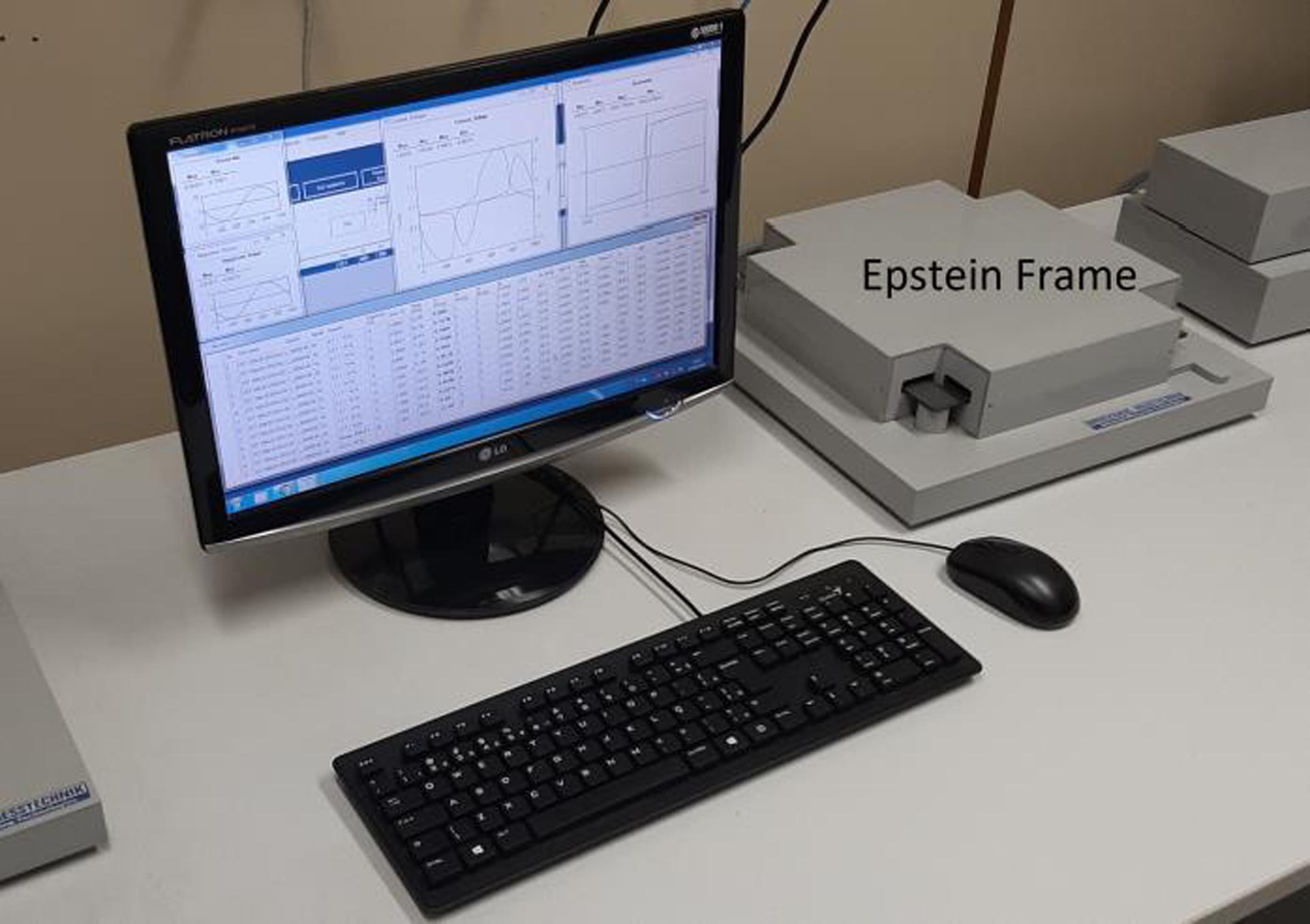Abstract
The Jiles-Atherton scalar hysteresis model presents five parameters used to represent the material tested and used to calculate the magnetic losses. This article presents a comparative analysis of the performance of two methods of identifying these parameters. In the first method, the equations of Jiles-Atherton were assembled into a single non-linear ordinary differential equation as a function of the variables of interest. An algebraic system of five equations with five unknowns is obtained by evaluating the non-linear ordinary differential equation in five points belonging to the branch of the experimental hysteresis loop. The parameters are obtained by solving this system of equations using the method of Non-Linear Least Squares (NLLS). In the second method, the inverse model of Jiles-Atherton is used to calculate the magnetic field H from the experimental values of magnetic induction B. Using the method of genetic algorithms (MGA), the objective function given by the sum of the relative error of calculated magnetic field and experimental magnetic field along the hysteresis loop is minimized. To validate methods the experimental curves were compared with calculated ones. When applying the methods, it was verified that NLLS besides providing more accurate results, it is faster when compared to MGA. In the MGA the convergence of the calculated magnitudes to the experimental magnitudes improves when one of the chromosomes of the initial population is the solution obtained applying NLLS.
Index Terms
Magnetic hysteresis; magnetic materials; method of genetic algorithms; non-linear least squares method













